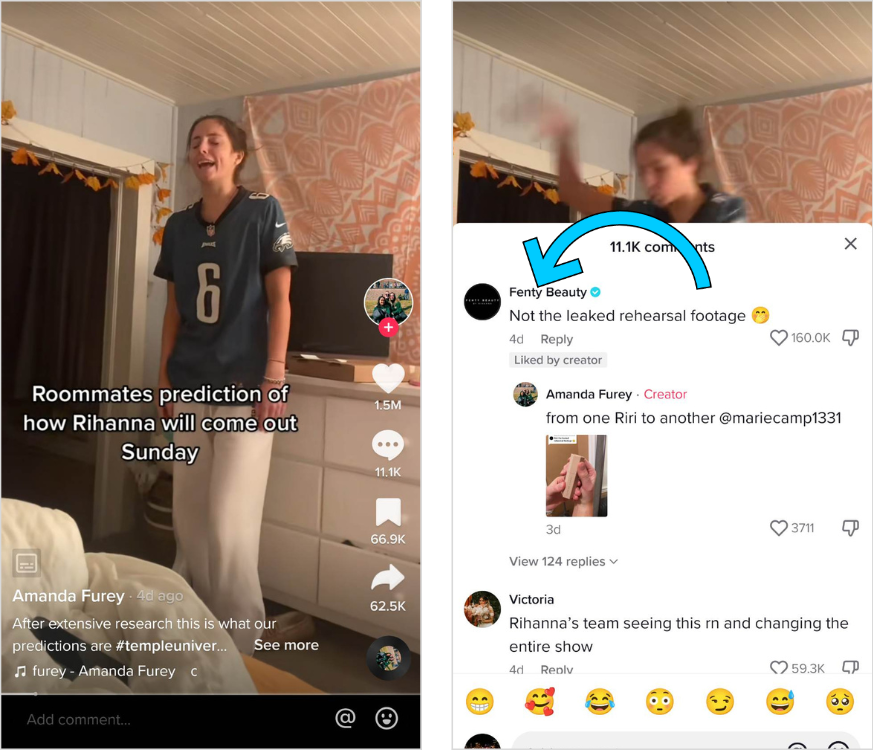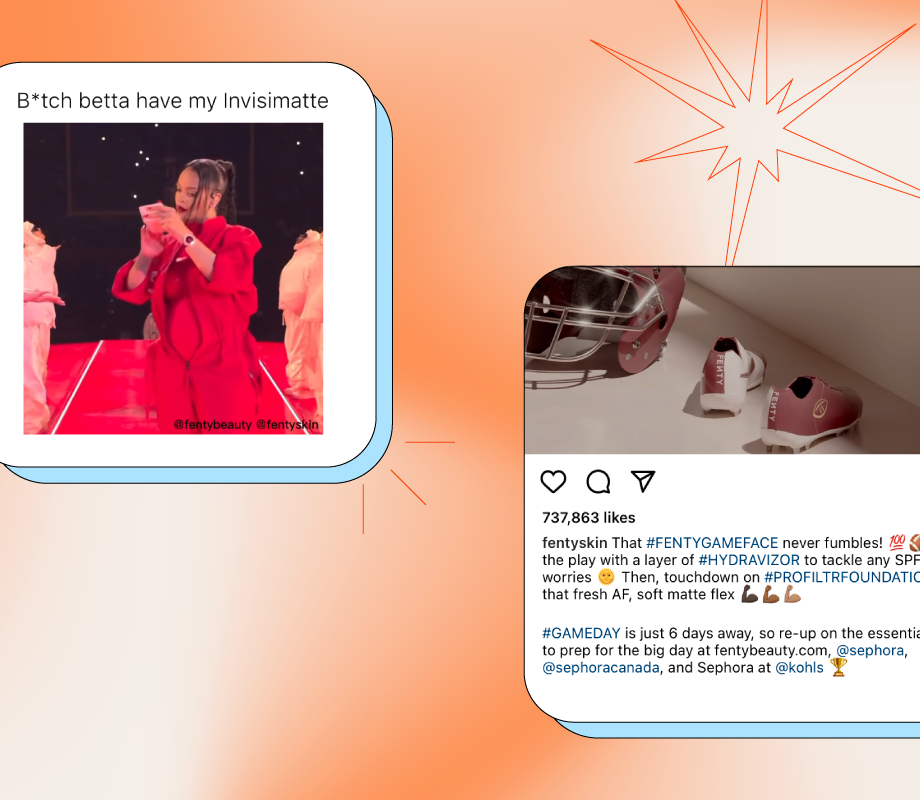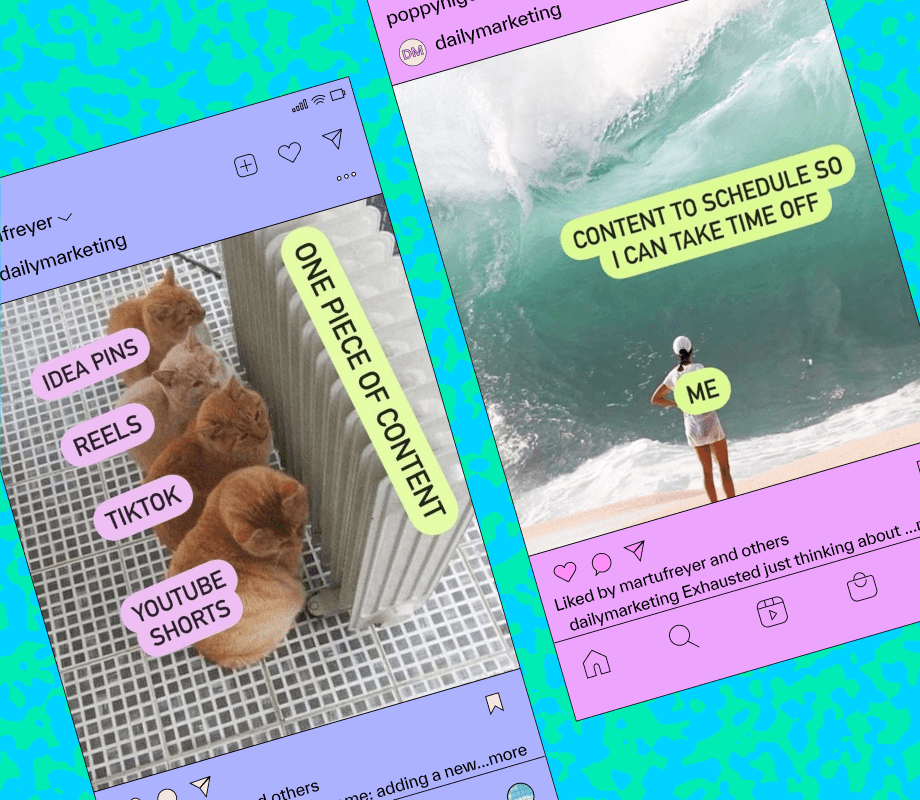ICYMI: There was a Super Bowl during Rihanna’s concert on Sunday.
me watching the game pretending not to care about Rihanna’s half time show so it comes faster#SuperBowl #Rihanna #FentyBowlpic.twitter.com/qvCrrdJDu6
— ¥le ✨ (@yleniaindenial1) February 13, 2023
And the marketing campaign that promoted Rihanna's triumphant return had us taking notes.
From limited-edition Fenty Beauty merch to engaging long-form video, Rihanna used different tactics to build buzz about her performance, spotlight her businesses, and connect with her community.
And it worked.
Here are three major takeaways marketers and social media managers can learn from her marketing strategy for the Super Bowl.
3 Takeaways From Rihanna’s Marketing Campaign for the Super Bowl
Depending on your business goals, a successful marketing campaign can help you raise brand awareness, drive traffic, or build an engaged community.
And Rihanna’s Super Bowl strategy checked all the boxes, as it combined her music, beauty, and fashion brands to:
Launch Limited-edition Merch
Tap Into Storytelling
Generate Buzz on Social Media
#1: Launch Limited-edition Merch
Once it was announced that Rihanna would headline the Super Bowl LVII halftime show, the Fenty marketing empire went to work.
Fenty Beauty launched limited-edition products — like the NFL-branded Gloss Bomb (with a new shade):
Meanwhile, Savage x Fenty promoted IRL pop-ups of their exclusive Game Day collection:
And post-performance, the Fenty team broke down which products Rihanna wore on stage — bringing it all full-circle:
Key Learnings:
Limited-edition merch creates a sense of exclusivity — plus, it’s great for building buzz. If you don’t have the budget, consider a timely promo code or giveaway instead.
Create a post-campaign plan so you can identify opportunities to promote your products and keep the hype train going.
#2: Tap Into Storytelling
Stories are integral to any marketing campaign.
They give you an opportunity to share your brand’s purpose and your “why.”
Rihanna’s team tapped into this with her Apple Music commercial leading up to the Super Bowl.
Paired with one of her most popular songs, we were reminded of her upbringing, values, and love for Barbados.
The result? Over 54M views and 40K comments on Instagram:
Key Learnings:
When storytelling, build off of nostalgia to tap into a core emotion — it'll help humanize your brand.
For video content, use a strong hook to keep viewers interested.
Repurpose your video across different platforms like Instagram, YouTube, and TikTok to reach a wider audience.
#3: Generate Buzz on Social Media
Prior to Rihanna’s Super Bowl performance, fans tried to predict what her set list would be and whether she’d have any guest performers.
And the Fenty brands leaned into this, as they dropped hints in their posts and engaged with fans' content too:

They even rolled out a custom audio — with influencers using it in their Reels and TikTok videos:
And the Fenty brands continued to post about the performance — keeping RiRi on everyone's mind.
Key Learnings:
Show up where your target audience is. Whether it's on Instagram, TikTok, or Twitter — create memes, reaction Tweets, and interactive posts they can like and share.
Partner with relevant creators to help promote your campaign — before and after the launch.
A successful marketing campaign will build hype (and maintain it), drive traffic, and engage with your target audience.
And if there’s one person who knows how to capitalize on a big moment and shine bright like a diamond, it’s Rihanna. 💎
Sign up for our free weekly newsletter, to stay up-to-date on the latest social media news, tips, and trends:




